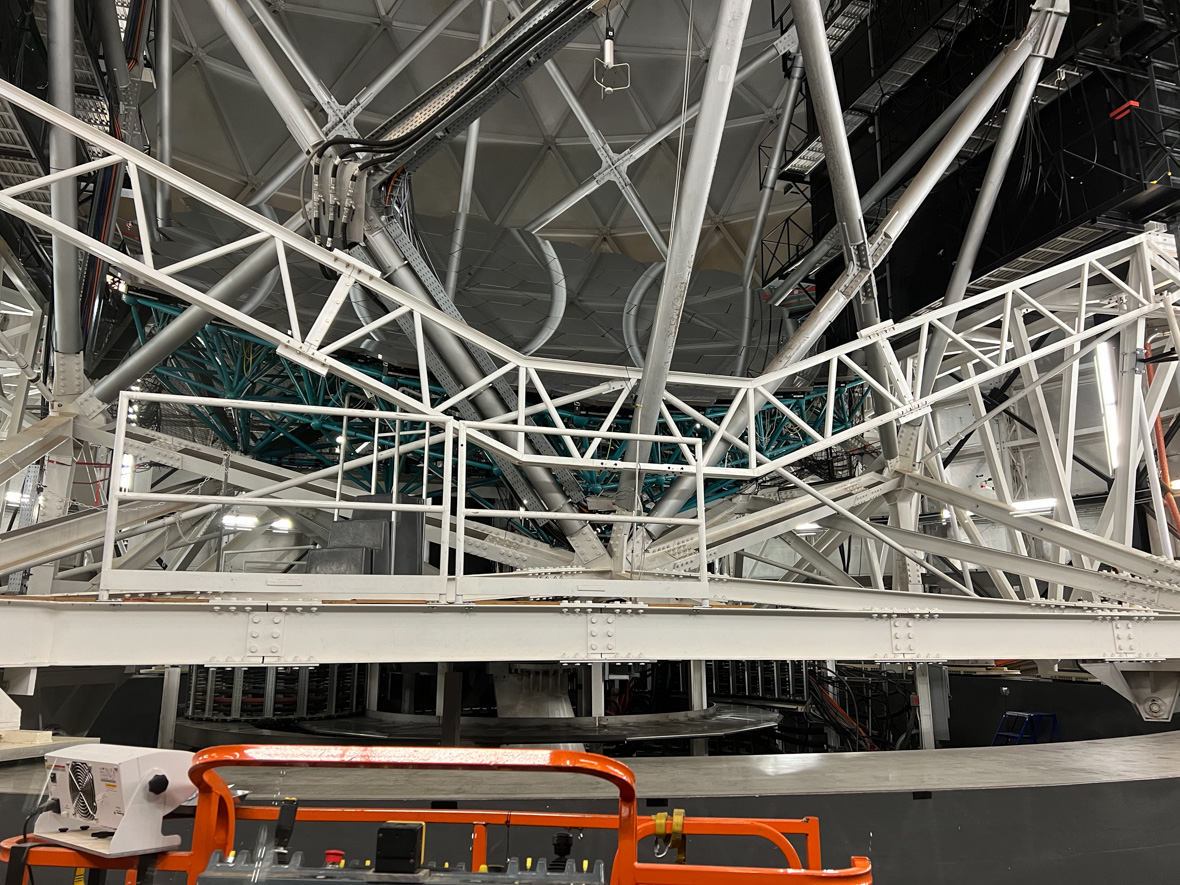
This is a very dark sky part of Texas, and so it makes sense to locate an observatory here. It is semi-open to the public for self-guided tours at the visitor center, and the grounds hosting three major observatory domes and many smaller ones. One of them allowed a peek at the 10-meter Hobby Eberly Telescope, a multifaceted composite mirror on a huge mount structure. I saw it in its resting position, perhaps for maintenance, or an instrument changeover. As I tried to identify the mirror segments, I realized that what appeared to be the interior of the dome building, was actually its reflection on the mirrors, their reflectivity so high as to make them seem invisible!
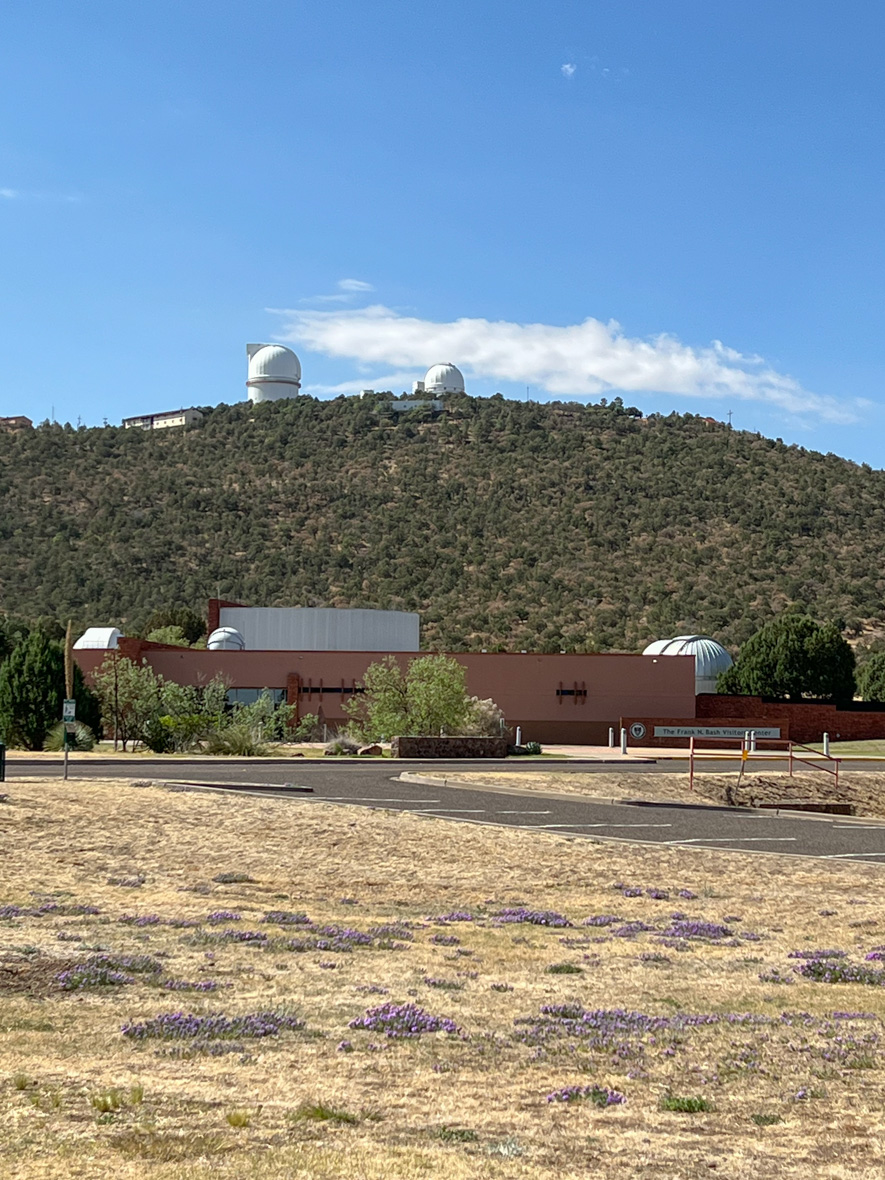
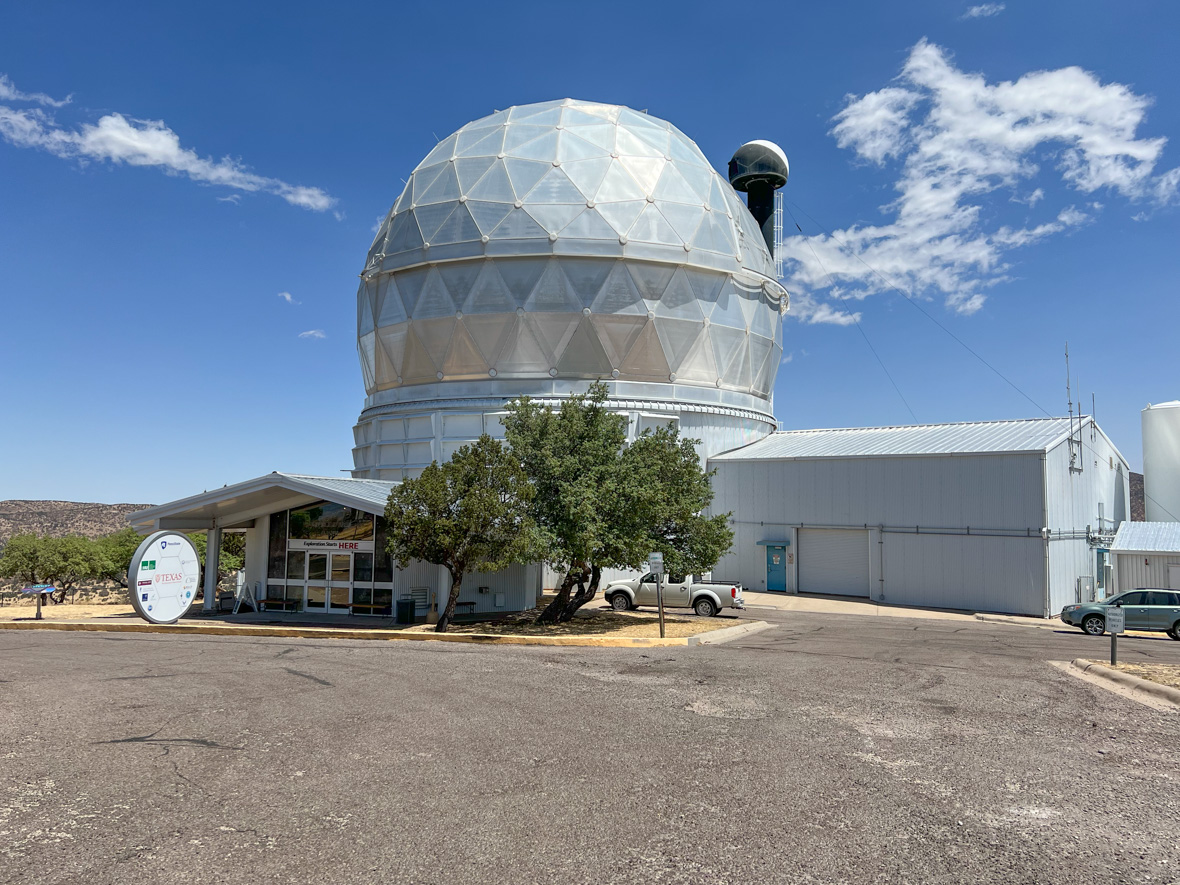
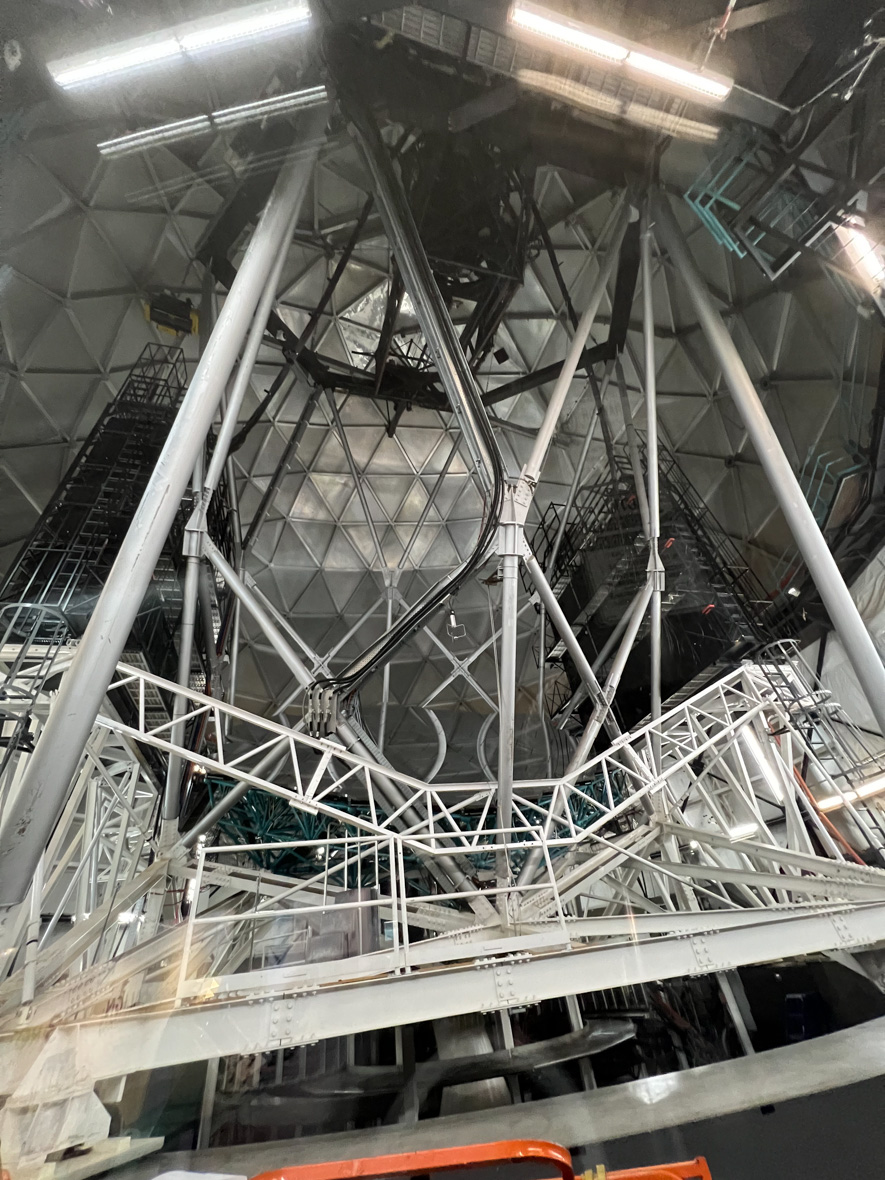
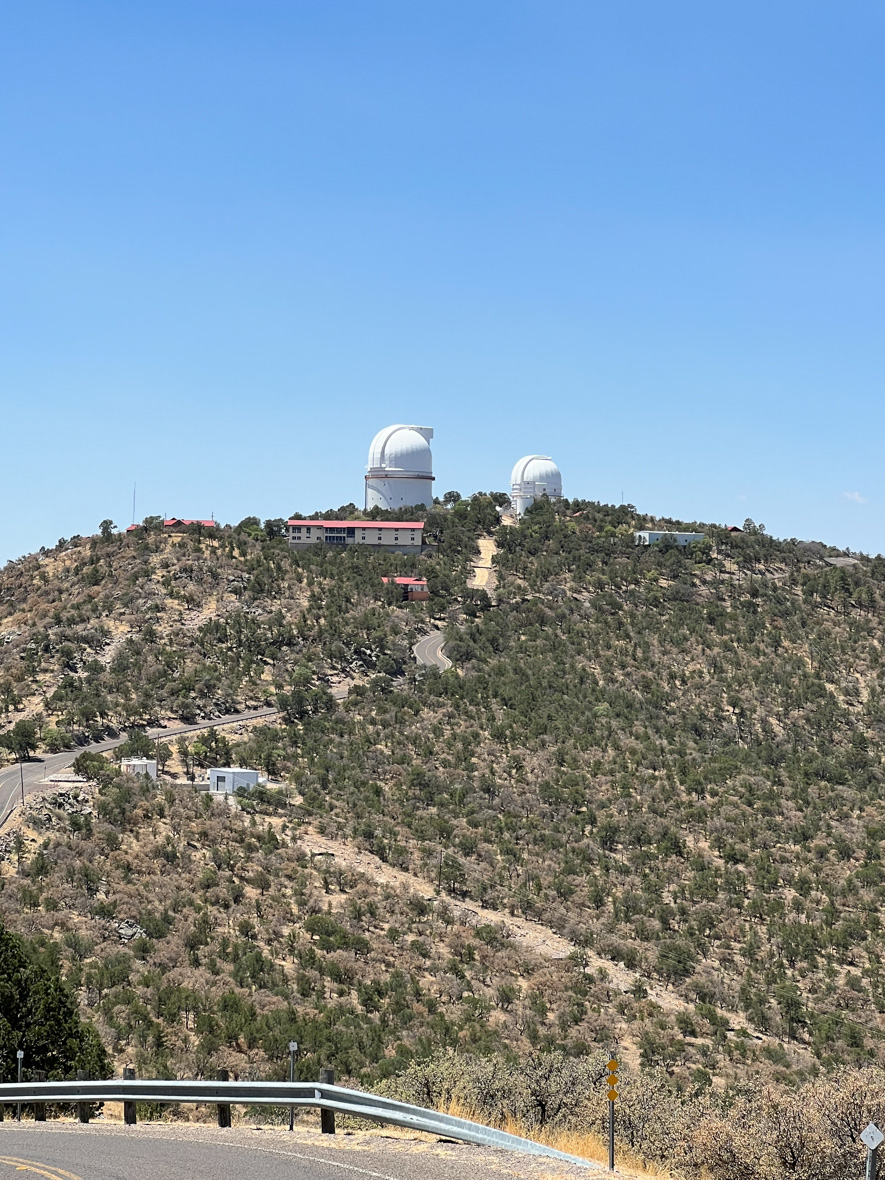
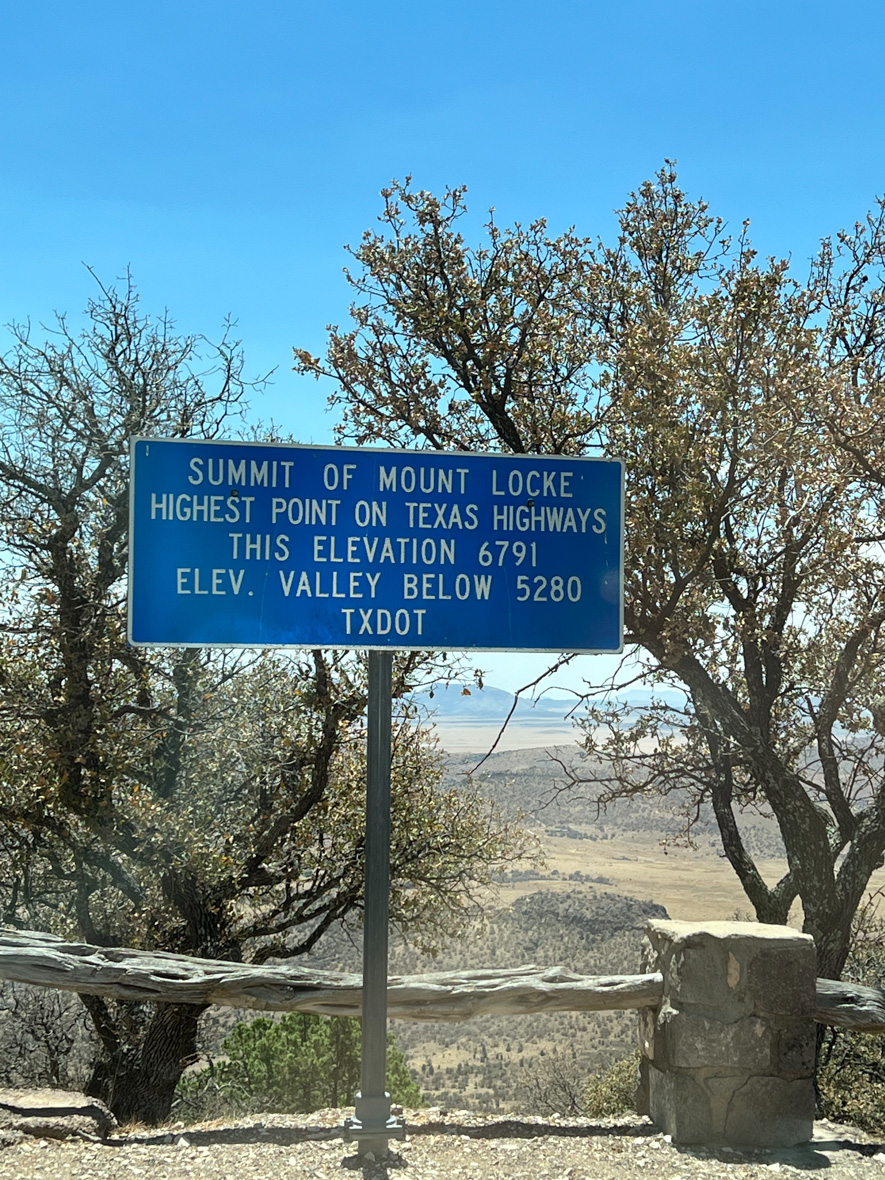
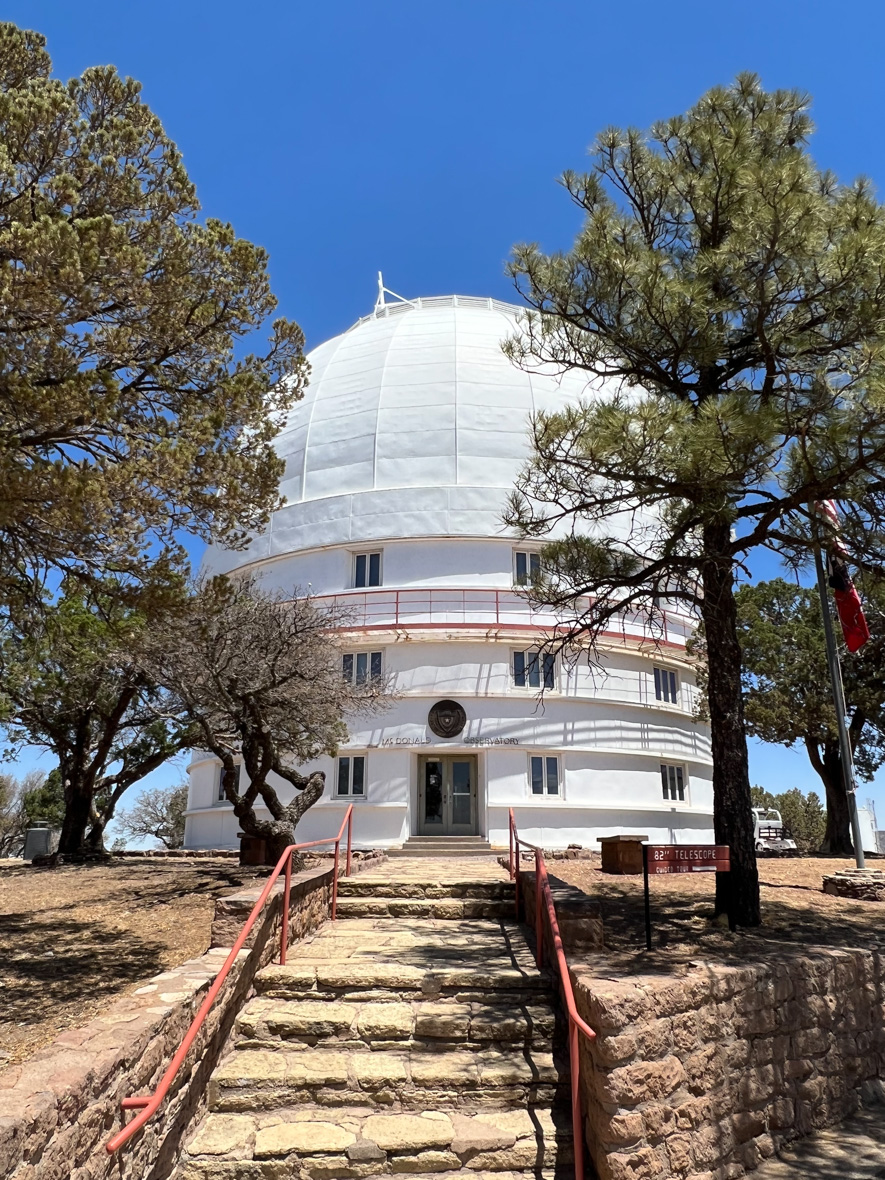
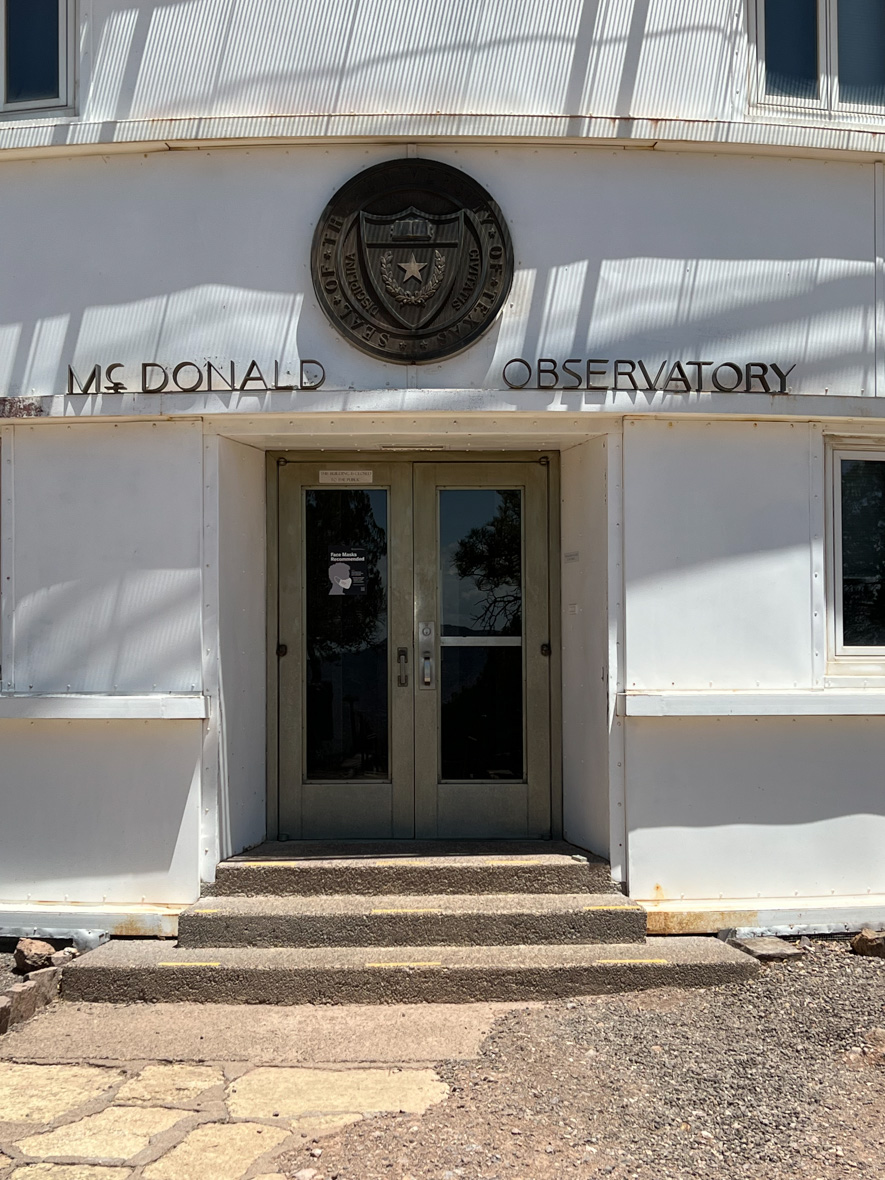
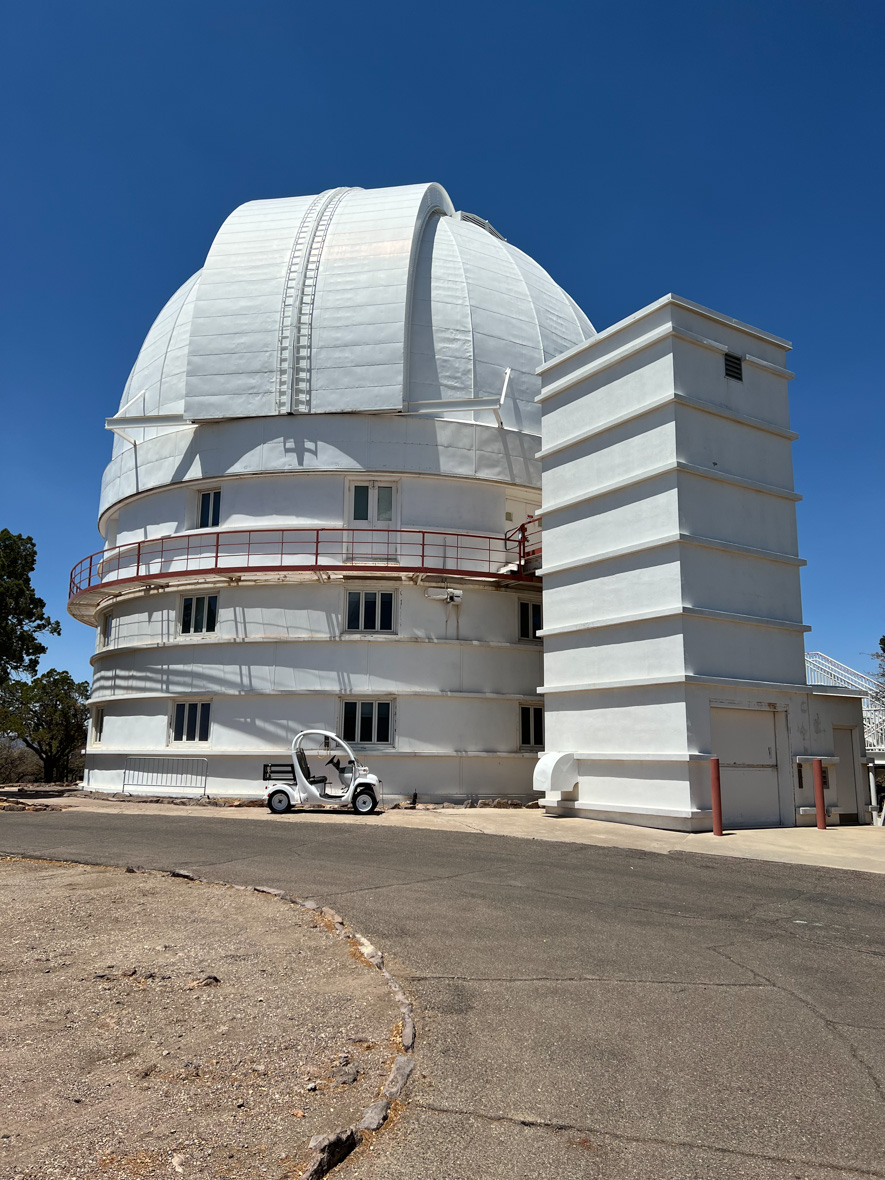
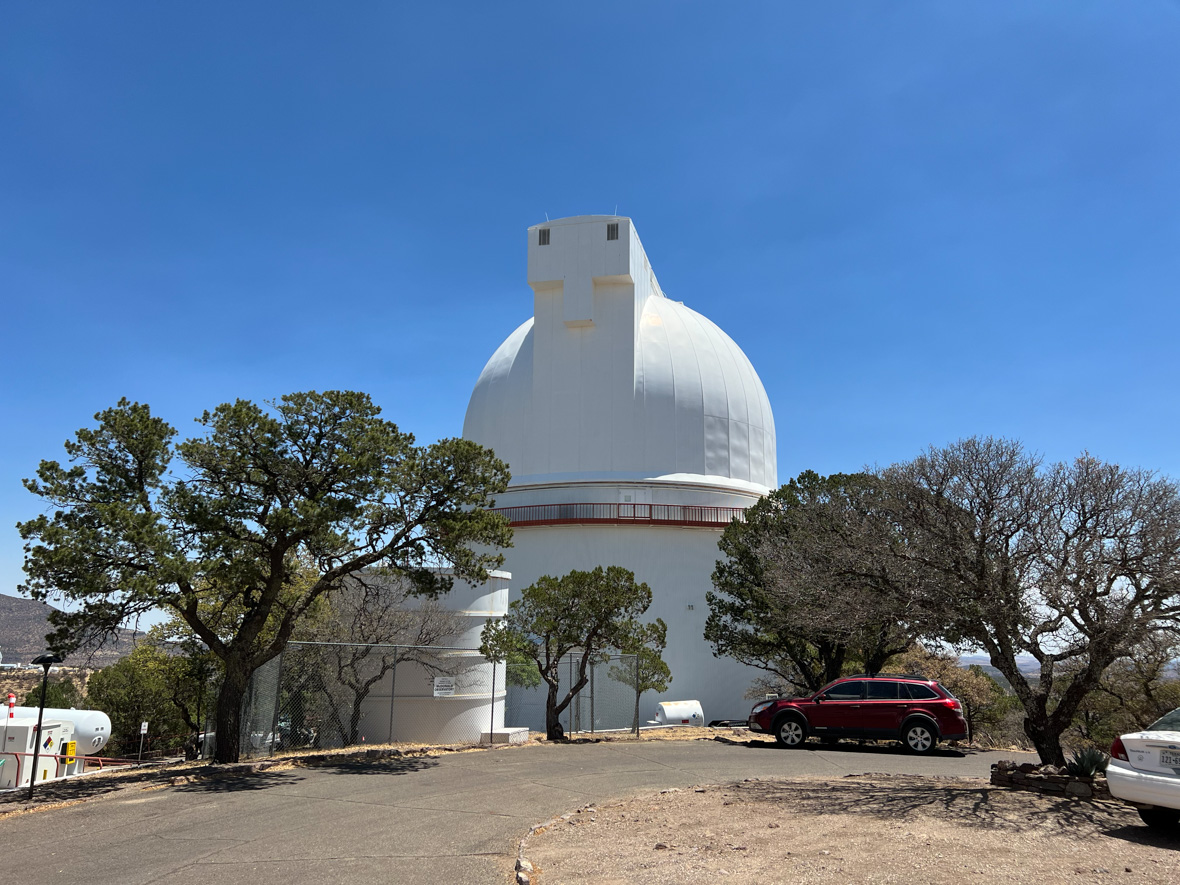
Fort Davis is the highest of all Texas towns, at an elevation of just under 5000 ft. This is high but not high enough to escape the heat wave. The additional 2000 feet to the observatory provided some relief and I made a picnic lunch in front of the visitor center. But having completely explored the observatory facilities, I headed back to the campground, thinking I could take a nap to make up for the sleepless night.
Alas, the floor of my tent was warm to the touch, retaining the heat conducting through the ground. I ended up napping in the car, silver windshield reflector in place, the AC periodically activating to keep the space from becoming an oven. I must have successfully dozed off, because I looked up and found a truck parked right next to me, and a family setting up at the neighboring campsite. The sun was lower in the sky, but the temperature still stifling.
I had known while planning this trip that there would be a total lunar eclipse during my time in Texas. I brought my traveling telescope and a lightweight equatorial mount; also my most solid tripod and a small sky tracking motor system (iOptron SkyGuider Pro), so that I could take time lapse frames during the eclipse. Tonight was my chance for a “dress rehearsal”. The nearly full moon would be rising on the horizon and for the next few hours moving across the eastern sky. It won’t be eclipsed tonight, but it would let me practice getting my equipment set up and properly configured.
I headed up to the skyline overlook before the 6:15 moonrise. I would need to wait until dark to polar align my cameras, but I could find locations for them and get them set up. If I marked the locations of the tripod feet precisely, I could return the following evening and position them in just the right place.
As I was preparing my equipment, a man walked up and started talking about… astrophotography and the gear he had: “ZWO” cameras and how great the driver software was for controlling the mount, stacking, etc. He went on and on. I’m sure it is great, based on his testimonial (and other reports from my astronomy club members), but I needed to focus on (and focus) my non-ZWO cameras right now and try to identify where on the horizon the moon would be rising—any minute now!
This is a hazard of being in a public space with equipment beyond a hand-held camera. There is a natural curiosity in people who are truly interested in knowing more about astronomy and the night sky. And I enjoy sharing my modest understanding of it and my peculiar corner of this hobby… at least when my attention is not needed on getting the shot.
I am not very good at multi-tasking, and so my conversation with the enthusiastic man must have suffered, while my concentration on the details of getting the camera settings right also suffered. Instead of performing a precise manual focus on the horizon (“infinity”), I relied on the camera’s autofocus. This was a mistake. Autofocus is an amazing technology, but it is optimized for situations that are NOT astrophotography, where stars are high contrast point sources that need to be perfectly focused for them to look like stars in the final image.
I couldn’t find the moon at moonrise. It was hidden behind the murk and clouds at the horizon, but eventually showed just enough contrast for me to locate it, a few degrees higher. This is just practice, so I was not disappointed at my trials and errors, this is exactly why one does this.

More people came to check me out, a little more self-aware than the evangelist astrophotographer. One party was planning to watch the eclipse. All of them were joining star parties at McDonald Observatory either tonight or tomorrow.
After sunset, a group of motorcycles arrived. They were touring, and set up their camp chairs on this high ridge to watch the stars come out as the sky darkened. I completed my alignment while they, and I, enjoyed this beautiful transition from day to night.
I returned to my campsite in the dark and made my preparations for another night, hoping the temperature will drop and I can enjoy a full night of sleep. As I pack up and put away the items that might be attractive to animals, I am visited by several animals: wild pigs and skunks! They wander through the campgrounds, hoping to run across something nutritious I suppose, the exact stuff I am packing away in the safety of my car’s hatchback. I’m glad the neighbors did not bring their dogs!
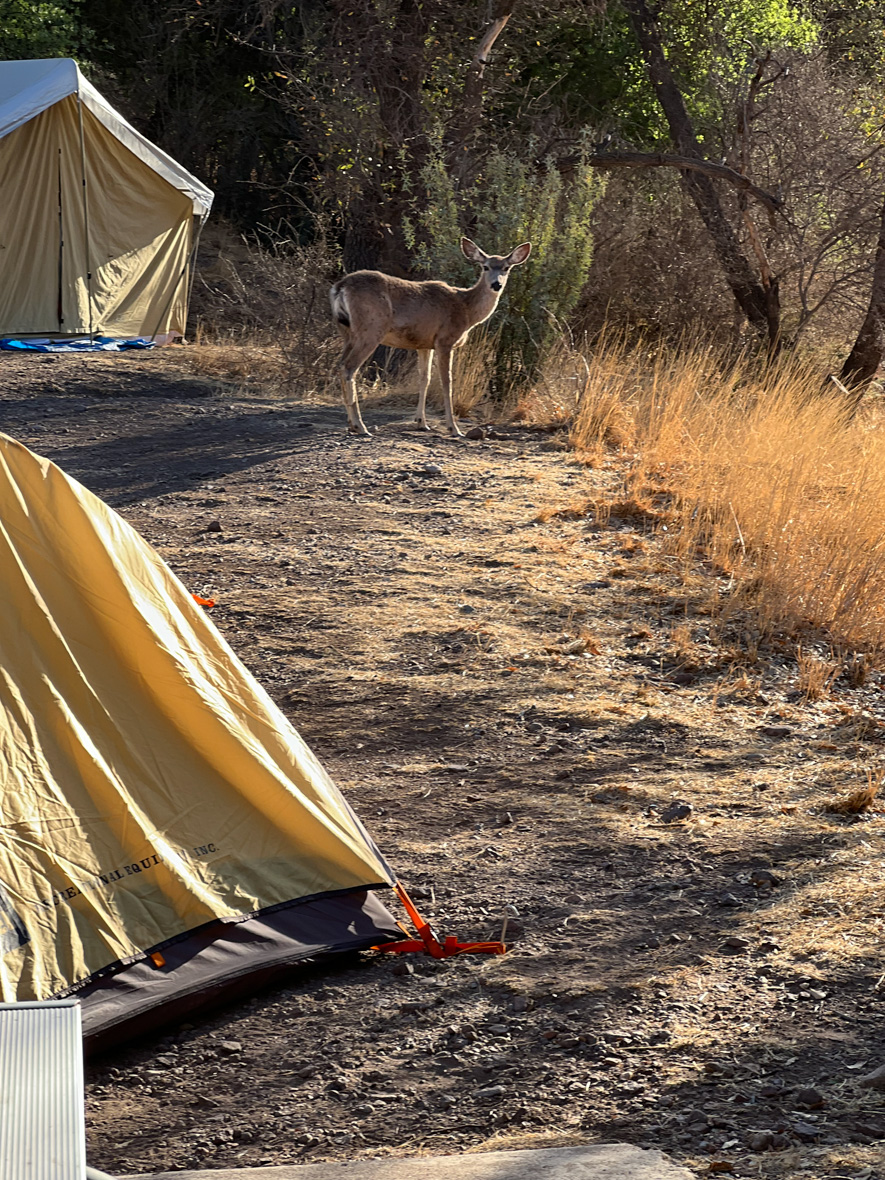
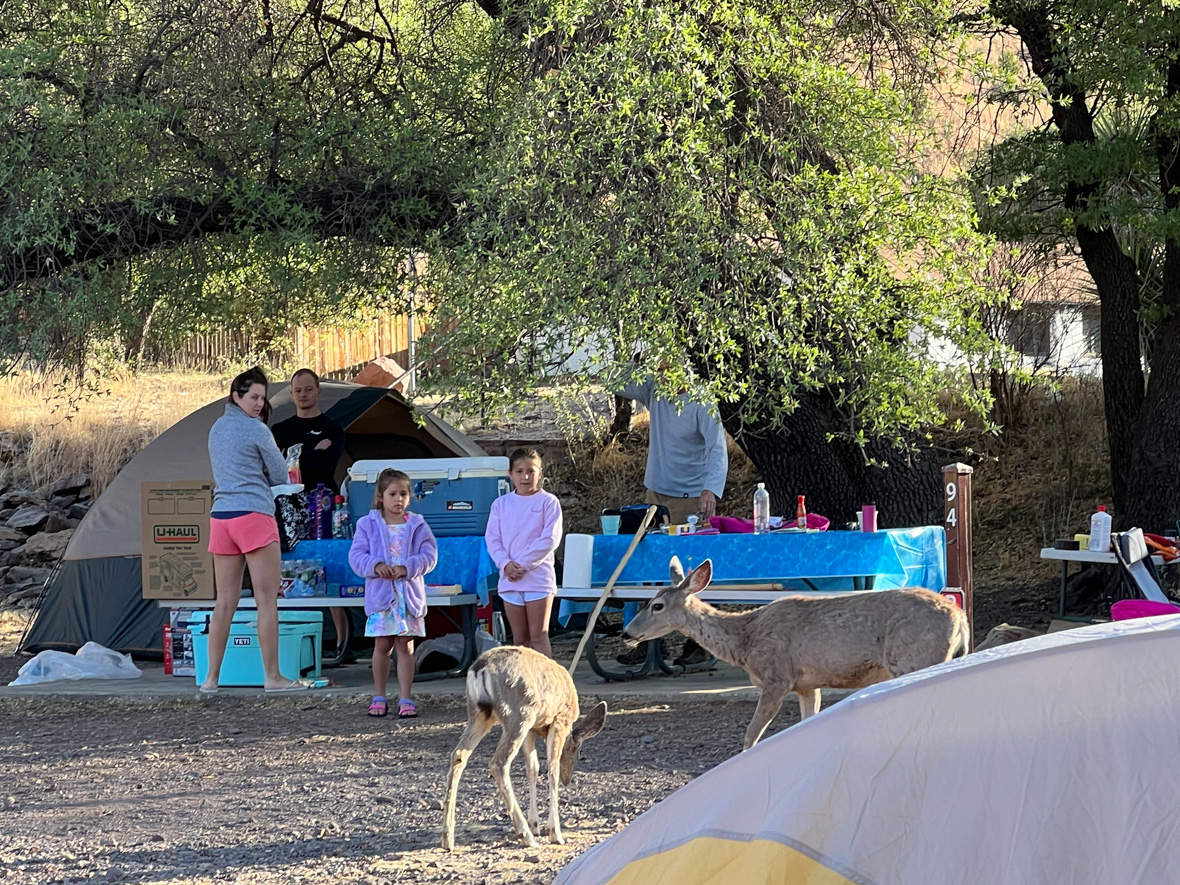


Pingback: Texas Road Trip: Diversion to Fort Davis | Thor's Life-Notes
Pingback: Texas Road Trip: Historic Fort Davis and Marfa | Thor's Life-Notes